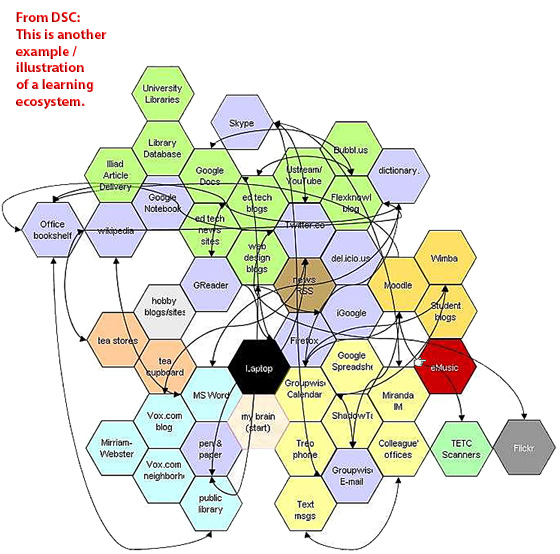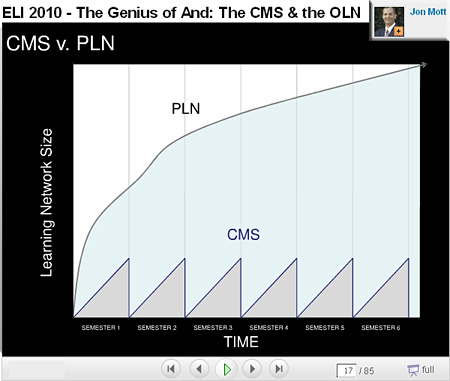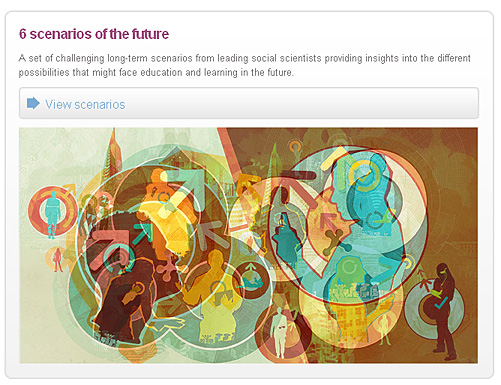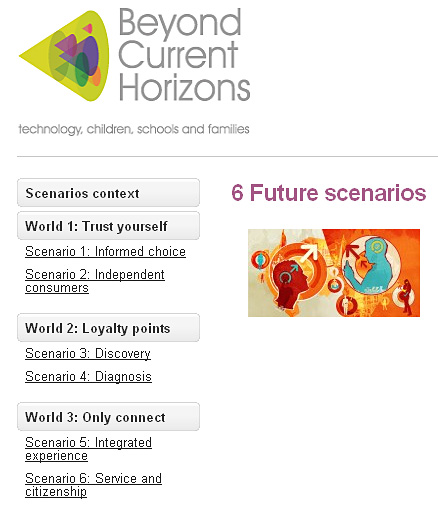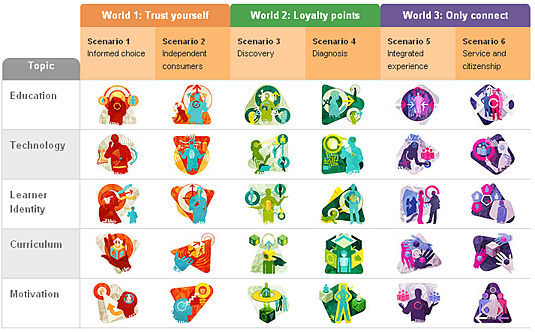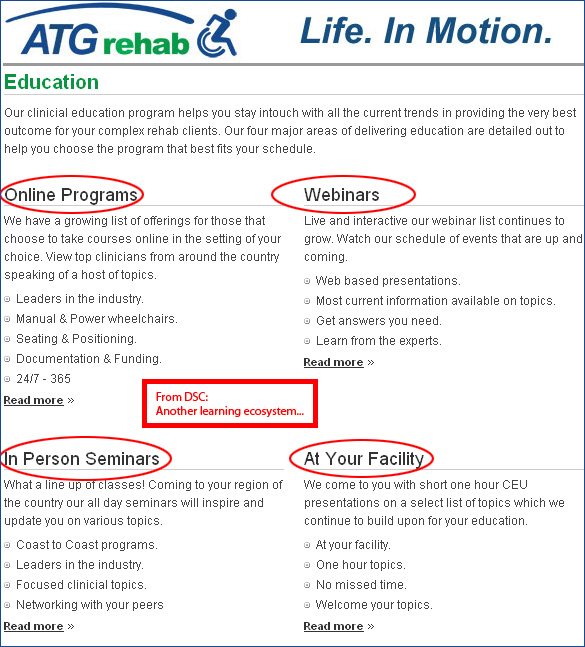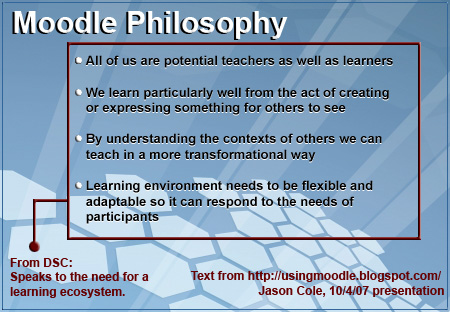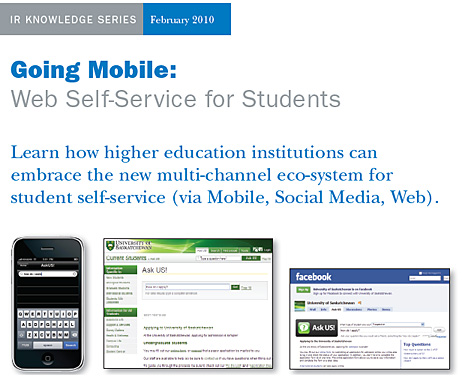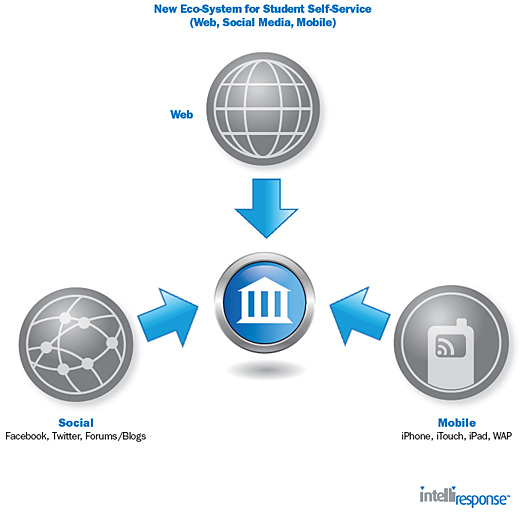ATG: ‘We’ll Bring the Teachers to You’ — from homecaremag.com
ROCKY HILL, Conn. — Education and information served up however you want it — that’s ATG Rehab’s vision for its new comprehensive rehab education program, one aspect of which launched on Thursday.
“We want to bring education in different forms and formats, in person and online, both free and for a charge, in a Webinar form, in an online form, tailored or specialized,” said Jerry Knight, president of northwestern regional operations for ATG Rehab, a top nationwide complex rehab provider.
The company, which has 26 locations in 21 states and is still growing, is partnering with the University of Pittsburgh, the International Association for Continuing Education and Training, manufacturers and clinical experts to offer everything from online modules and Webinars to in-person and in-facility training.
three pressing challenges — 2/26/10 posting from D’Arcy Norman dot net
Three pressing challenges for learners in creating and using technology in an educational context.
2. overwhelming options
3. literacy
4. Solution?
The only solution I can think of is to just dive in. To live with a whole bunch of technologies. To not see them as separate, distinct, or extra, but rather as just the way things work. Write a blog. Publish a newsletter. Manage a wiki. Shoot some video. Post photos. Just spend time doing it. Manage your own personal cyberinfrastructure. Build your personal learning environment. Engage your personal learning network(s). They are there already, you just need to tap into them (emphasis DSC as this describes a Learning Ecosystem).
Excerpt below is from:
Learning TRENDS by Elliott Masie – March 2, 2010.
#608 – Updates on Learning, Business & Technology.
54,885 Readers – http://www.masie.com – The MASIE Center.
Host: Virtual Leadership LAB & Seminar – Saratoga Springs
Video learning in so many modes:
I am struck by the wide variety of uses for video in learning that are on our menu as designers. As I inventory how we are using video at The MASIE Center, the list is long and growing
– Video “YouTube” Story Segments.
– Video PodCasts.
– Video Reports – Webcam Captures.
– Produced Video for Learning Modules.
– Skype (on every one of our desks at work)
– Webinar Video Elements.
– High Definition Video Conferencing (up to 4 Megs)
– Telepresence Video (Beyond 6 Megs).
– Flipcam and iPhone Video Clips
– Webchat Video.
– Video Capture of Seminars and Classrooms.
– Video Keynotes Live and Asynchronously.
– Video Guests in Workshops and Conferences.
– Video Coaching.
The introduction of video into almost every aspect of our learning and work tasks is profound and “disrupting”. As designers, we must experiment with these formats – looking for evidence and appropriate use cases and examples of when not to use video. Rising bandwidth, lowered equipment costs, ease of editing and growing expectations of learners will make video a profound component of our learning efforts going forward.
From DSC:
Wow. As you can see from the above listing (and this is a highly-targeted listing in terms of the scope it addresses, as it focuses just on video), there are so many ways to deliver content, to teach, to dialog, to share information, to learn…and these methods are constantly changing…thus the name of this blog, Learning Ecosystems.
Toward a new ecosystem of learning: Reflections on the Digital Media and Learning Conference — from spotlight.macfound.org
Highlights include talks on the participation gap by S. Craig Watkins, and Sonia Livingstone on learning and risk taking.
“We were lucky enough to spend a few days in San Diego last week at the first Digital Media and Learning Conference supported by the MacArthur Foundation and organized by the Digital Media and Learning Hub at University of California, Irvine. Lucky not only because it was 70 degrees in February (apologies to those of you still digging out from this month’s blizzards) but because listening to smart people in academia, government and technology talk about a burgeoning digital ecosystem is our idea of a good time. We came away with lots of material for future Spotlight features. Here’s some of what we heard at the conference and what we continue hear around the web upon our return…”
E-learning ecosystem in organizations — from Michael Hanley
Which included this reference/definition:
An ecosystem is a system whose members benefit from each other’s participation via symbiotic relationships (positive sum relationships). It is a term that originated from biology, and refers to self-sustaining systems (emphasis DSC).
Global success, Global failure of the CMS/LMS needs to stop — from Drupal Education for Educators
I know you’re saying “but Bryan, didn’t you mean just the Drupal solution”, no. Drupal is not the answer. Plone, WordPress, Moveable Type, Joomla, PHPNuke, Moodle, NOTEPAD is not the answer. We need to start looking at systems development based on a services and scalability perspective. No one system is going to solve that problem (emphasis DSC). We need to start looking at what systems do well and then play to those strengths in the creation of a service.
So, what I’ve proposed above is more of a communication between and across systems. Things like single sign on systems and simple modules within each project could allow users to flow seamlessly between them. RSS and XMLRPC calls could allow session / user display data to flow seamlessly across each. The most important thing though is that any system can be any CMS/LMS choice. Example of that….
- Core LMS / data system is Moodle
- CMS is Drupal
- SMMS is Drupal
- Syllabus system is WordPress
- Communications system is Plone
- Blogging platform is moveable type
- Wiki collaboration via Wikispace (emphasis on bulleted points: DSC)
From DSC:
I ran across this 10/4/07 NITLE keynote presentation from Jason Cole (one of the co-authors of Using Moodle, 2nd ed.) and on slide 4/46 he mentioned the following: (the bulleted text is his, the graphic and callouts are mine)









